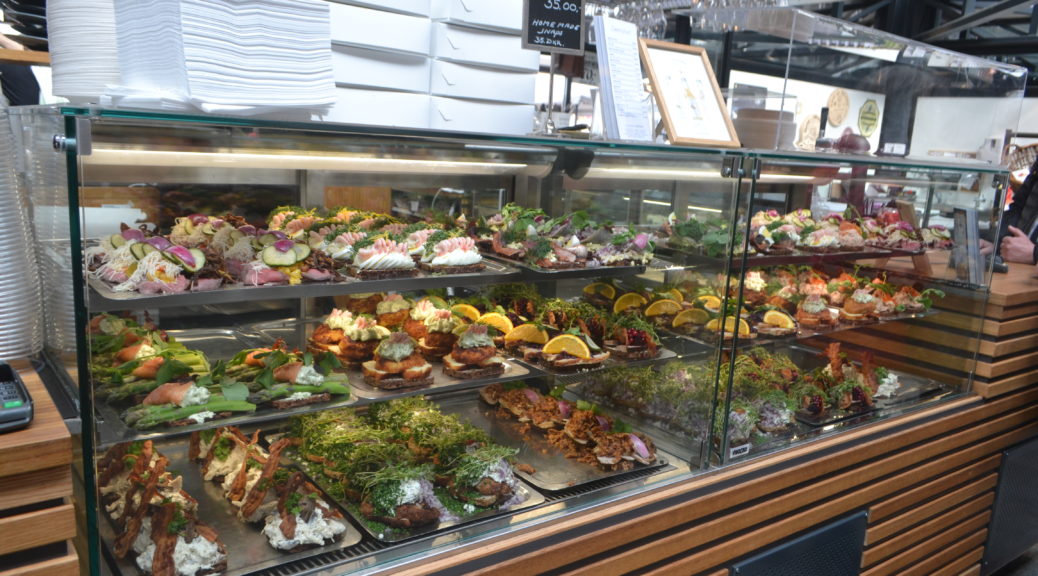
Foodie Travel – Top Thing to Eat in Copenhagen, Denmark: Smørrebrød
Sometimes I’ve been known to get obsessed with one specific thing when I travel.
In San Sebastian, Spain, I was consumed by seeking out the best pintxos – the beautiful small bites along with your drink – at local bars.
In Oman, it was the aflaj, the ancient waterways, that I was so fascinated by I took road trip detours to find them.
In Italy, truffles held my focus – buying truffles at local artisanal food fairs, attending truffle festivals all over the country in different seasons, cooking with truffles – I just couldn’t get enough.
My foodie obsession to eat in Copenhagen? Smørrebrød.
Although I had never heard of smørrebrød before I started planning my Copenhagen visit, it didn’t take much reading to become intrigued even before I went. These open-faced sandwiches sounded to me a lot like the Danish version of Spanish tapas or Venetian cicchetti, and I always jump at the chance to have small bites on the road when I can, because it means sampling more dishes of the local cuisine.
The more I ate smørrebrød and their balance of flavors and textures, the more I wanted to seek out just one more version, sampling yet another new combination to eat in Copenhagen. And the more I wanted to know about the culture surrounding them.
What is Smørrebrød
Not only was smørrebrød listed as the top local food to try, there is an art and science to how each slice is constructed. It’s definitely not your basic open-faced sandwich. It literally means buttered bread, and then anything else can be piled high for that perfect bite.
Smørrebrød starts with a slice of dark, rye bread, often with seeds or nuts inside, although certain toppings merit a different type of hearty bread. Then there is butter or lard of some kind spread across the bread from end to end. I enjoyed the extra richness and thought it was to add flavor – which it is in part – but of course those clever Danes also know the layer of fat keeps the bread from getting soggy as you pile on the other ingredients.
From there, the only limit to what goes on a smørrebrød is the imagination of the chef, although there is a focus on local ingredients as well as creating a balance of both flavors and textures. And of course the final products should be visually appealing as well.
The smørrebrød I saw most frequently were either seafood or meat based. Copenhagen has been known for its herring for centuries, especially in pickled form, and you’ll see plenty of herring smørrebrød options. There are also tiny shrimp and other types of fresh and smoked fish that are almost always offered. In terms of meat, there were a lot of variations of roast beef with some type of horseradish and also various pates. And if you still have space after both seafood and meat smørrebrød, usually the final traditional smørrebrød you’ll eat in Copenhagen is topped with cheese.
A slice of smørrebrød really is constructed, with the different ingredients built on top of one another into a work of art that also happens to be delicious. Proteins typically get layered first, then are topped by a series of garnishes. These toppings are chosen to add color, crunch, or perhaps moisture via a jam or remoulade.
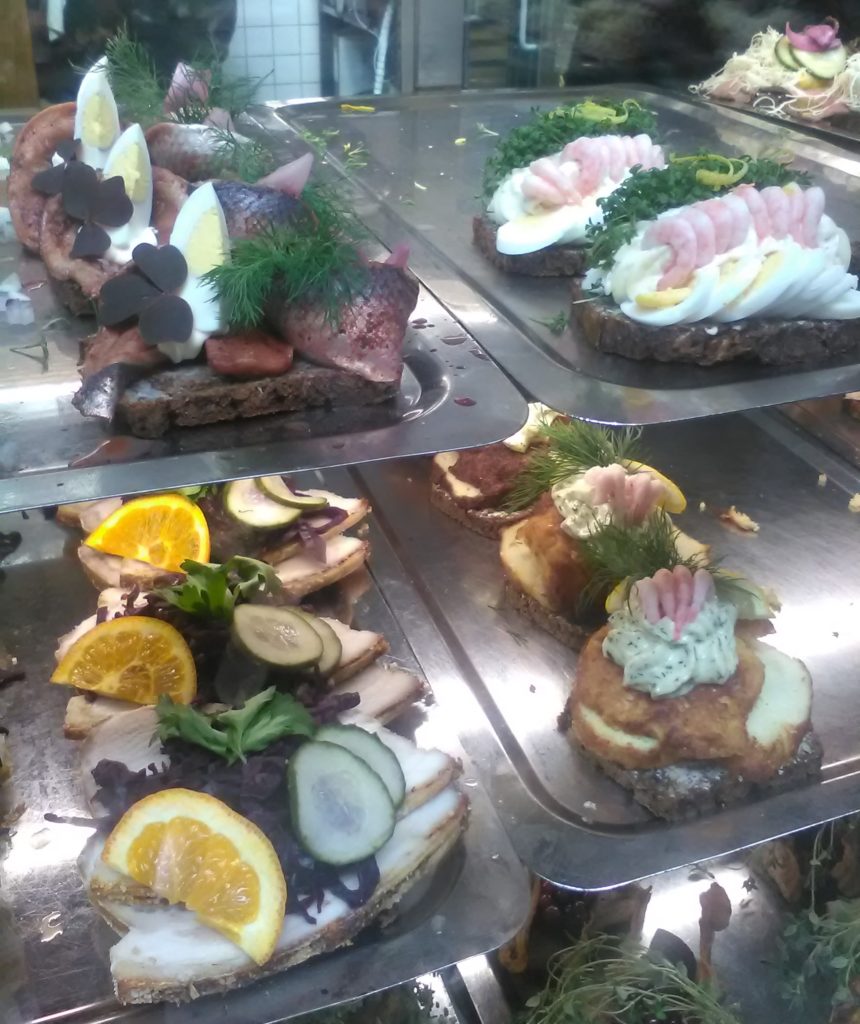
Although originally a lunch on the go for factory workers in the late 1800s, today’s smørrebrød can be a snack, a hearty lunch, or part of a spread while hosting a party.
Just don’t forget to eat these piled-high creations like the Danes do – with a fork and knife.
Why Smørrebrød Intrigued Me
Maybe I’ve just been impacted by the Italian way of life after my 3 years living there, but there is something I find appealing about particular acceptable combinations of local flavors developed over the centuries.
And smørrebrød definitely fits the bill.
Yes, it’s food. In some cases, it’s a way to repurpose leftovers. And to highlight local specialties.

But it’s really the Danish sensibility that gets me. The balance of flavors – sweet and salty and sour and bitter – just like you’d find in Asian cuisine. The textural contrasts between often soft pieces of fish or meat, topped by crunchier elements like fried onions or crispy bacon. And the culture of design in Denmark that leads to expertly layered smørrebrød where the final product has a great balance of the size and colors of the different components.
Luckily my servers at smørrebrød spots around Copenhagen were friendly and helpful, guiding me through lengthy menus and helping me to fully appreciate these beautiful bites.
What to Drink with Smørrebrød
Of course, the smørrebrød experience is not only about savoring the food, there are traditional beverage pairing as well. Or really, two main ones.
Beer is the go-to drink to accompany smørrebrød for many locals. There will likely be multiple beers on tap at any smørrebrød restaurant. Servers were great at pointing me toward traditional options, and there are several breweries in the city of Copenhagen, so I tried to sample as many different local brews as I could.
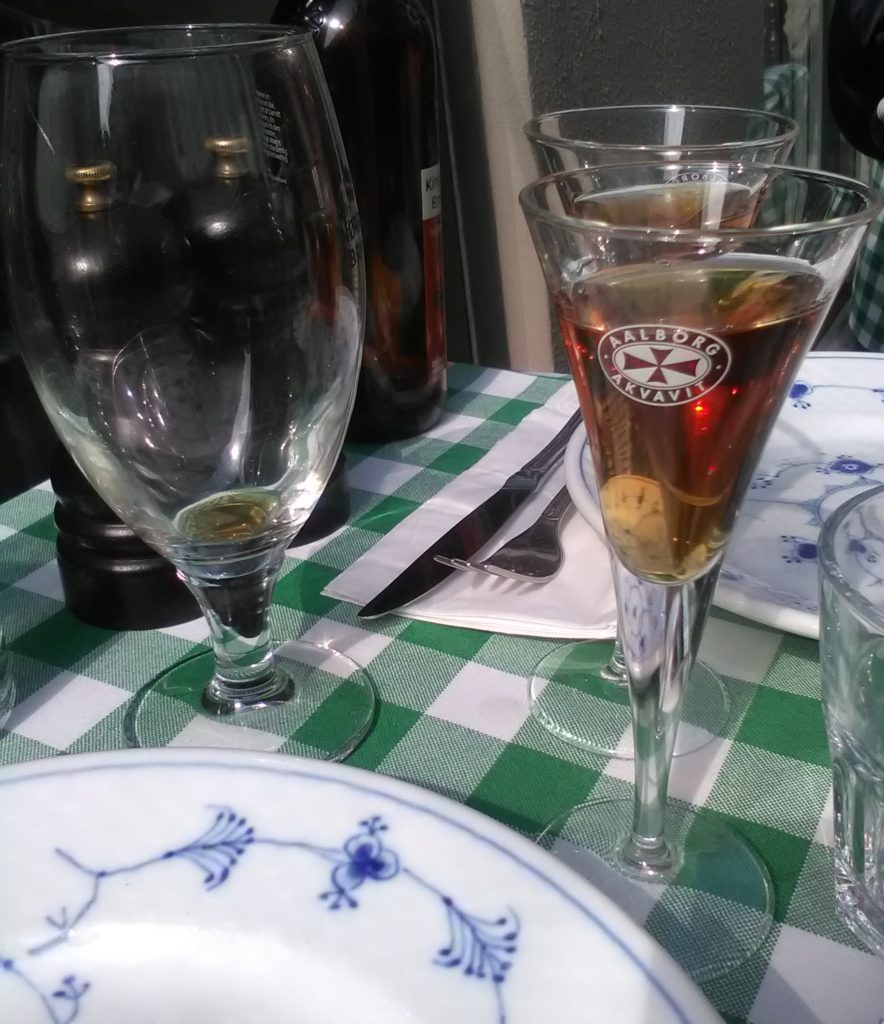
The other far more potent beverage pairing for smørrebrød is aquavit, a local type of schnapps that is infused with different herbs and flavors. So of course this means that only certain types of aquavit go with certain types of smørrebrød, but rest assured there will be an ideal chilly sip of aquavit to pair with any food you’ve ordered. The few times I enjoyed aquavit, I usually only had it with my final smørrebrød, and left it up to the server to decide which flavor would be best.

But like with other local, traditional food and beverage pairings I’ve enjoyed in my travels, it all just goes so well together.
Best Places to Enjoy Smørrebrød in Copenhagen
There are plenty of spots around Copenhagen to enjoy smørrebrød, but not every spot you see is worth eating at. For some delicious plates of smørrebrød in Copenhagen, check out the following places:
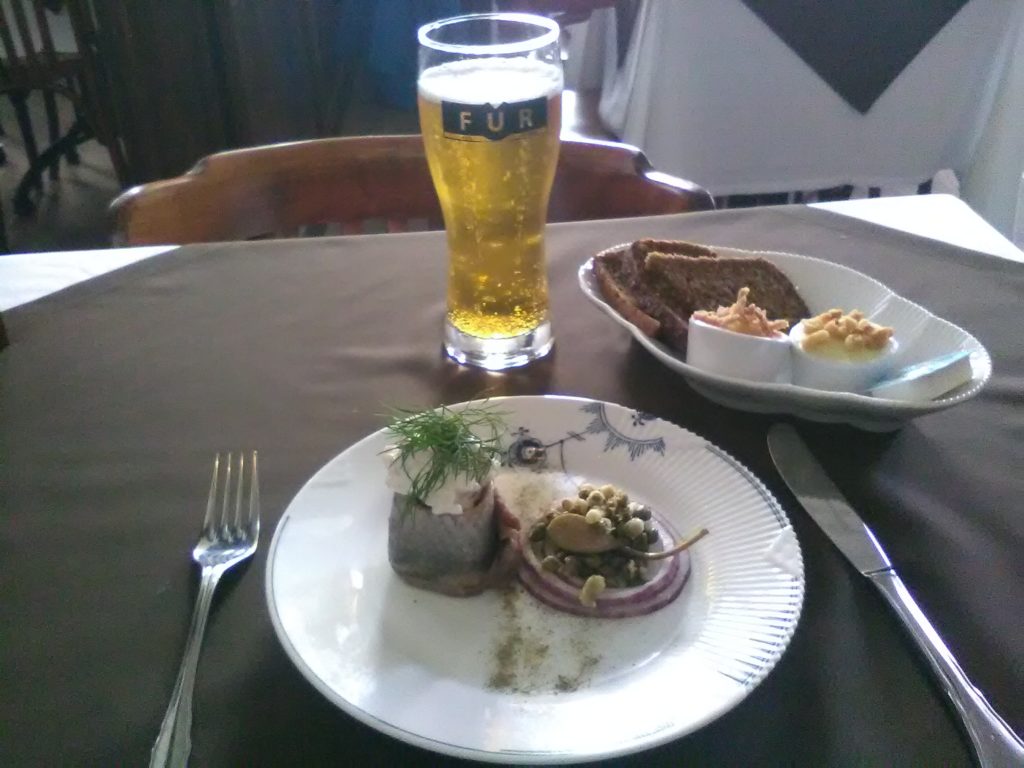
Serving up smørrebrød since 1910, this spot is a classic location that has maintained a lot of the same décor from when it first opened. Fish is its specialty, with a lot of different herring options available, and plenty of other smørrebrød options as well as their extensive beer and aquavit selection. If you’re having trouble deciding which smørrebrød to order, there is also a lunch tasting menu available.
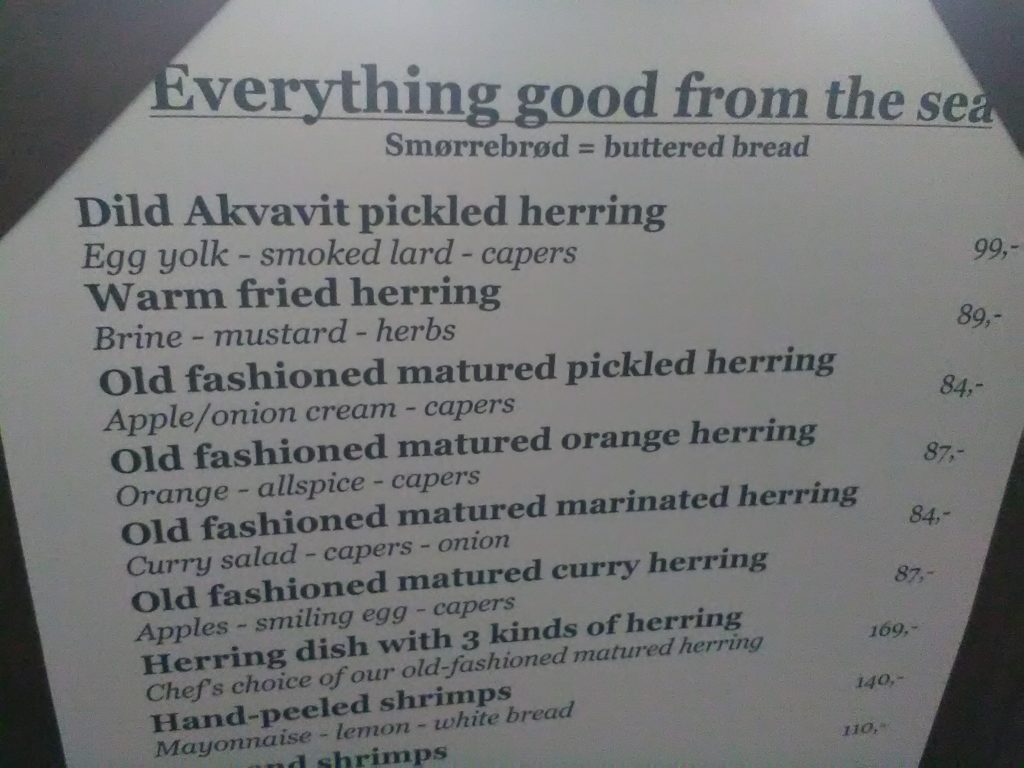
TIP! This spot is not open on Sundays, except for the first Sunday of the month.
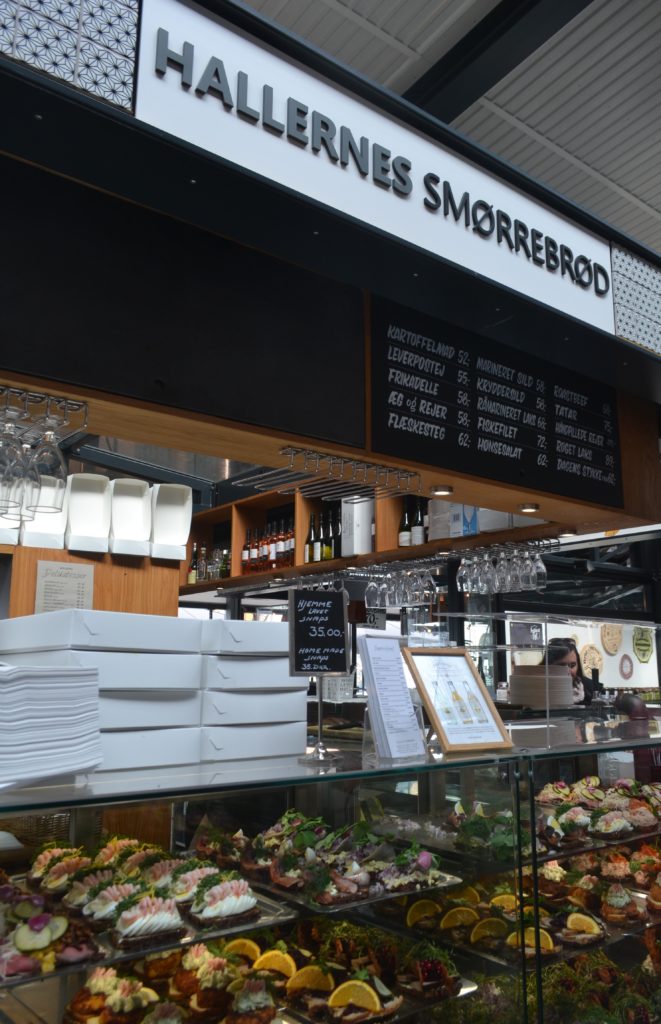
There are a few market locations around town, and I visited the one in Torvehallerne. The Torvehallerne market is a stop on a lot of food tours, so there was a mix of locals and tourists in the queue. This was actually my first moment spotting smørrebrød the morning after I arrived and they all looked so beautiful I couldn’t resist purchasing (and immediately sampling!) a delicious few.
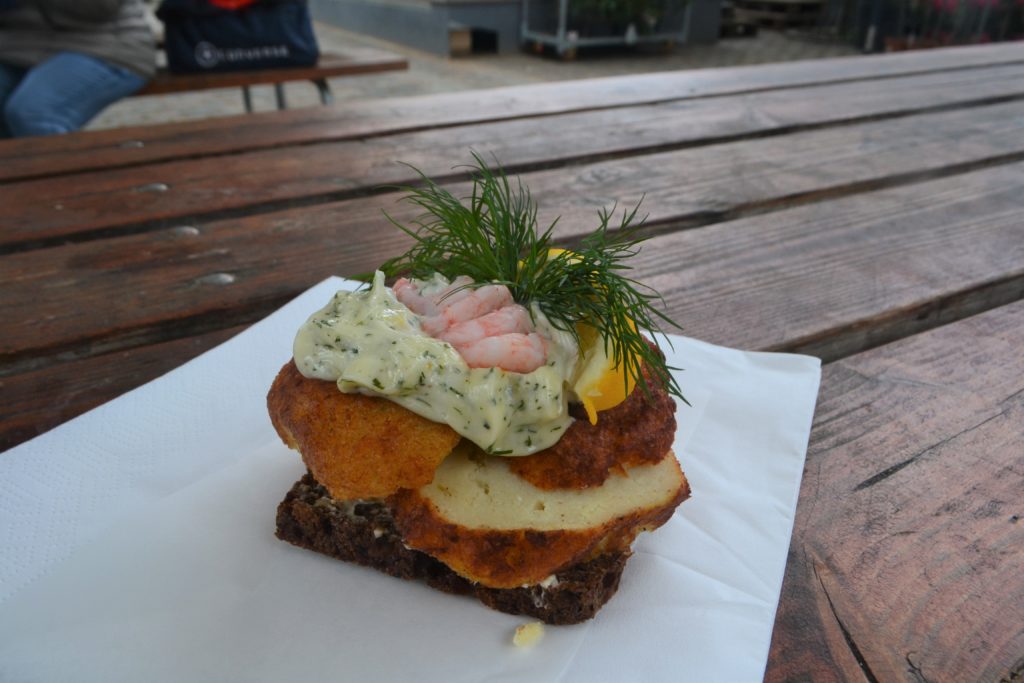

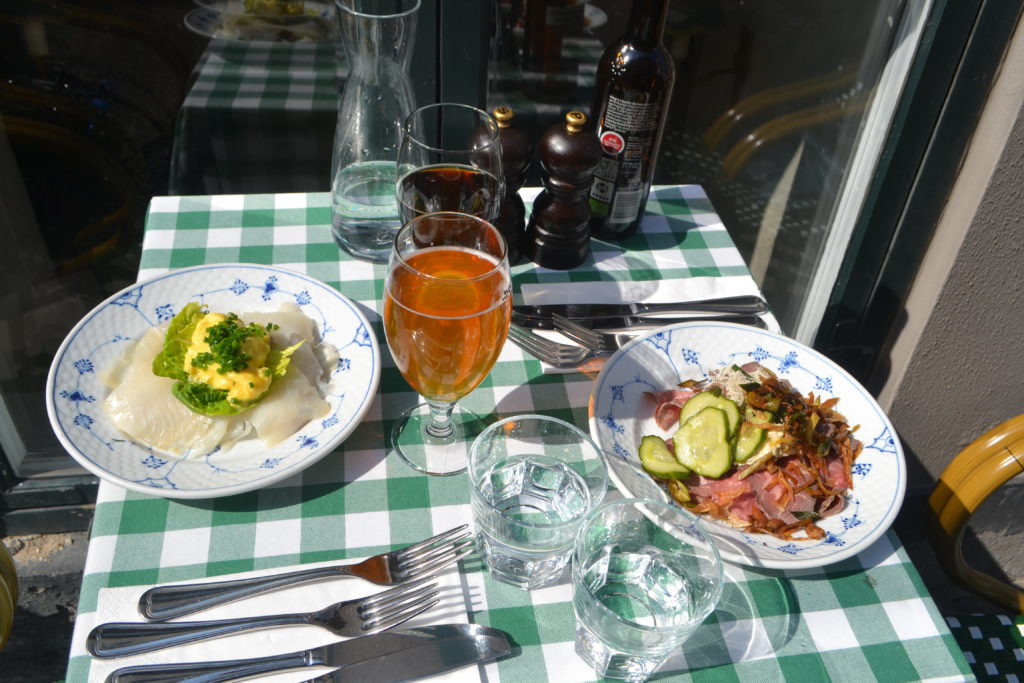
Thanks to the friendly service and convivial atmosphere (and delicious bites, of course), this was my favorite smørrebrød restaurant of my time in Copenhagen. Their cozy atmosphere makes the food experience even more pleasant, and the waiter offered excellent advice on both food and aquavit pairings. This was also one of the few places, where I got to assemble my own smørrebrød – the fried camembert with jam and fried parsley on rye.
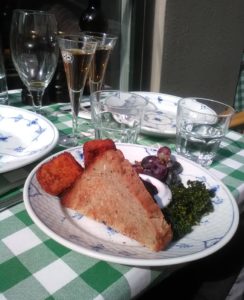

TIP! Restaurant Kronborg has the additional benefit of being open 7 days a week.
Even, the Aamann’s stand I spotted at the airport had some great looking bites, and I couldn’t resist one more smørrebrød that I ate on the plane ride home. (They also have several locations around the city of Copenhagen.)
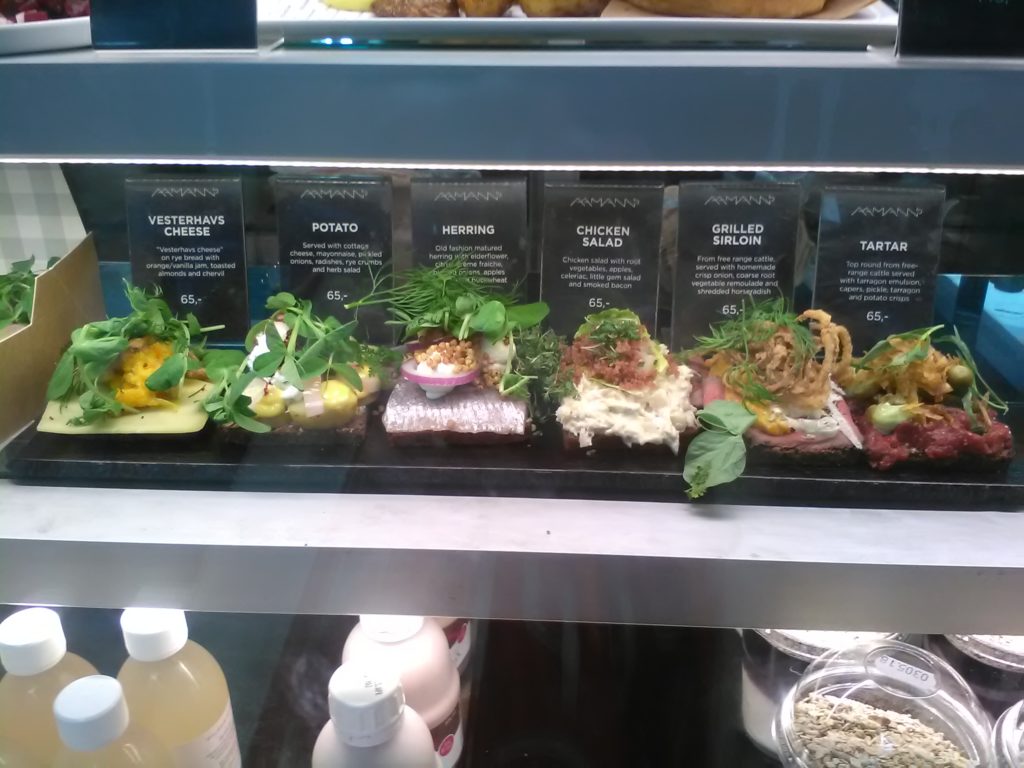

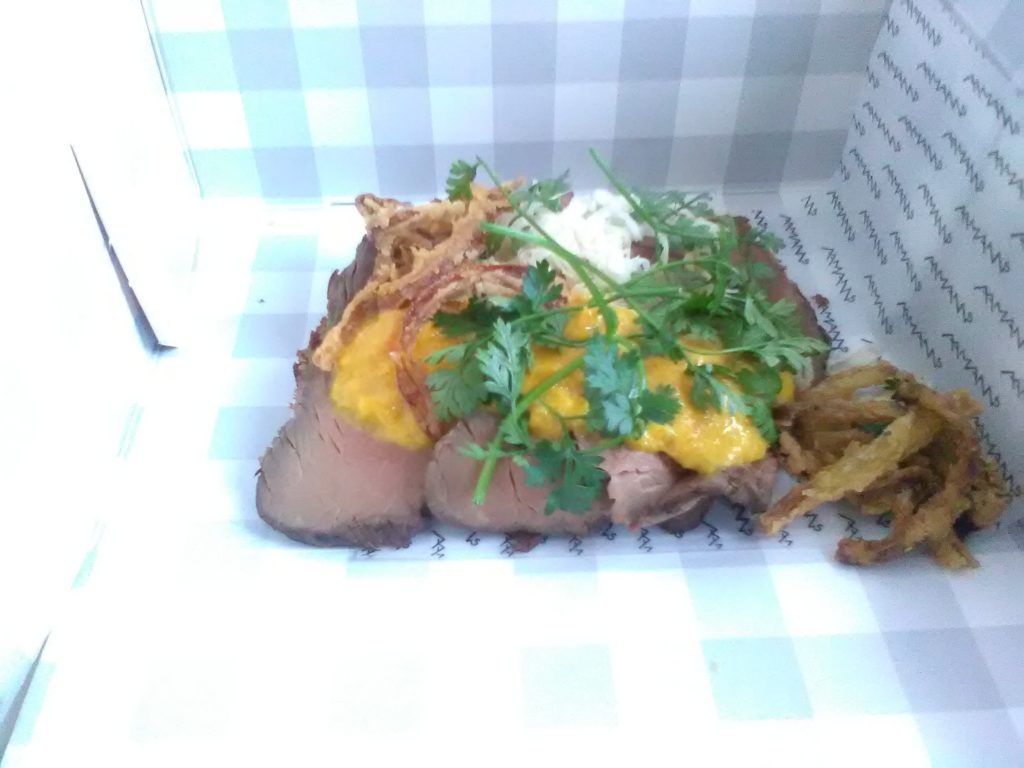
I didn’t realize this when I booked my trip, but I ended up visiting during a public holiday weekend, so every restaurant I wanted to sample was not open, especially on the holiday Monday. Several smørrebrød spots operate only during the week and there are others that are closed on Sunday and public holidays.
The other main two spots that came up in my research and are ones that I’d like to check out on my next visit:
Rita’s Smørrebrød. A more local spot that is a bit away from most tourist attractions in a residential area, this spot is only open Monday through Friday.
Restaurant Schoennemann. Possibly the most historical (and fancy) of all the smørrebrød options, there is a wealth of options at this spot, categorized by the protein used. In addition to the mainstays, you’ll also find venison, duck, and veal as smørrebrød on their menu. Open since 1877, it’s had plenty of time to build up its reputation, so online bookings are recommended. It is closed on Sundays and public holidays.
You can see how I couldn’t get enough smørrebrød during my long weekend in Copenhagen, and I’m not alone in my fascination. Lonely Planet recently named eating smørrebrød in Copenhagen as one of the top 10 food experiences in the world.
So what are you waiting for, head to Copenhagen and try them for yourself!
Have you ever tried smørrebrød? What else do you seek out in your travels? Have you experienced a singular obsession in a specific destination like I have? Tell me in the ‘Comments’ to inspire what obsession I should seek out next in my travels!
Enjoyed this post? ‘Pin it’ to share on Pinterest & save for later!
